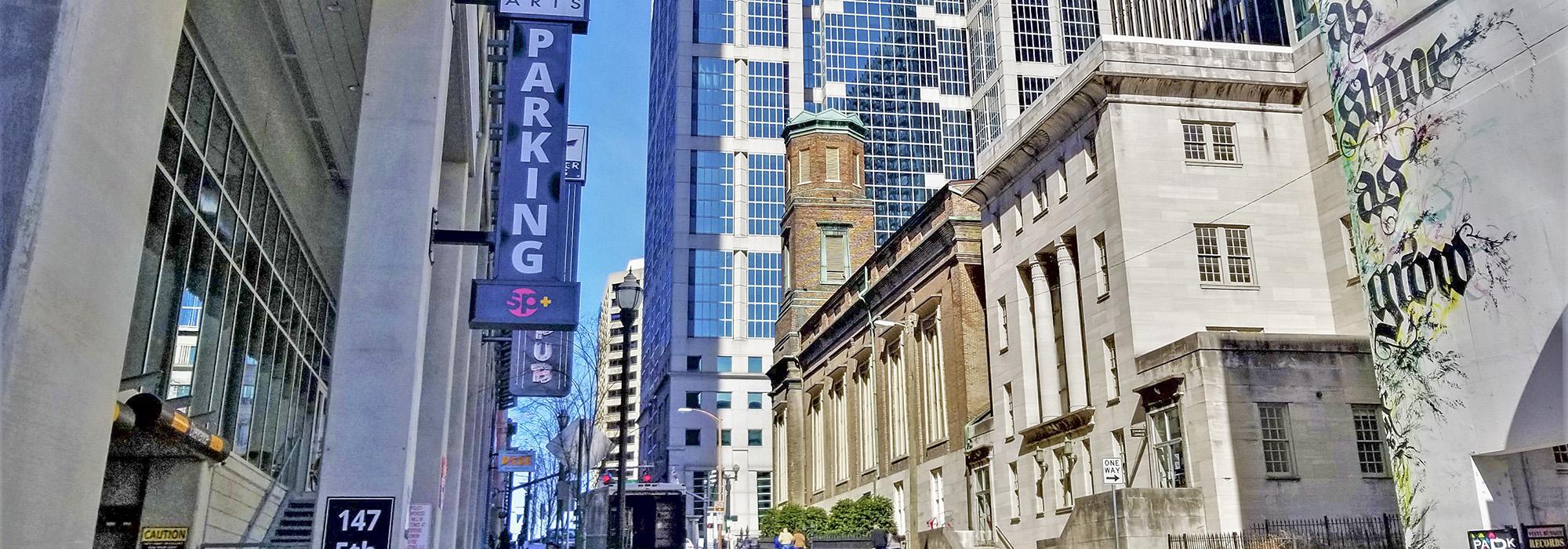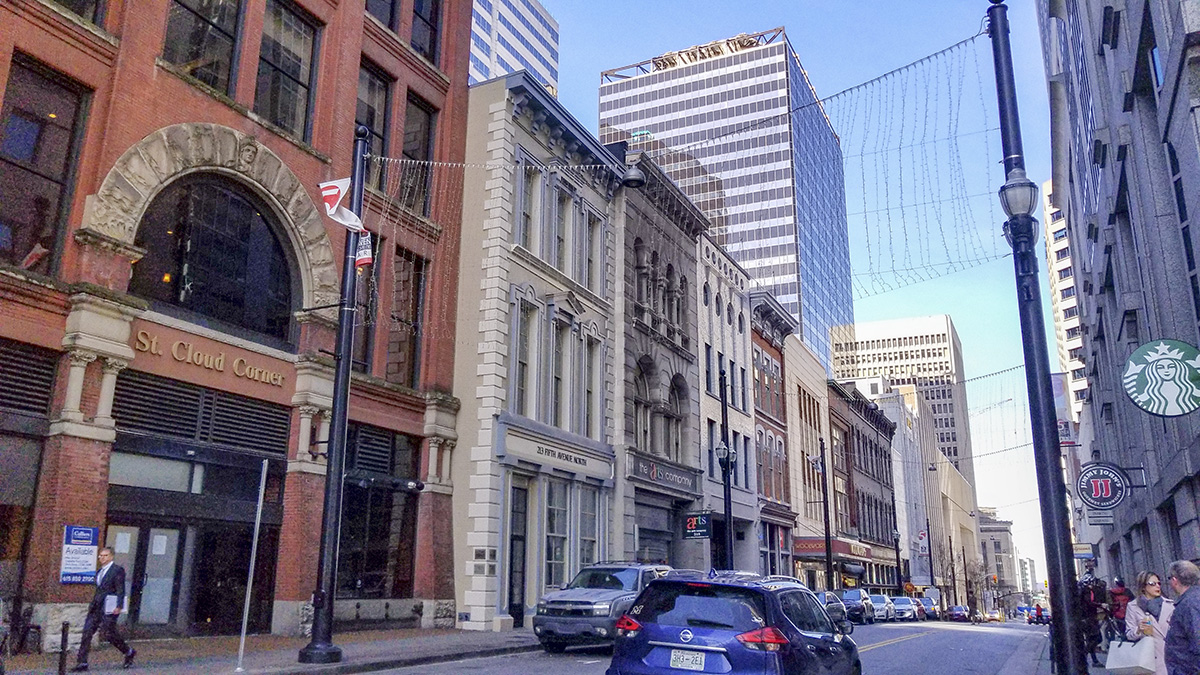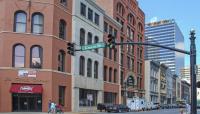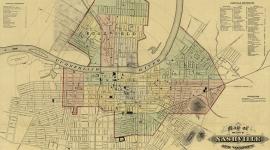Landscape Information
Traditionally the retail center of the city, this district in downtown Nashville began as a neighborhood of residences and small businesses in the antebellum period. The area grew into a major commercial artery after the Civil War, with clothing and furnishing shops that catered to women established along Church Street and Fifth Avenue from the 1870s to the 1890s. Built in 1913, the Woolworth ‘five-and-dime’ store was the site of sit-ins during the Civil Rights movement of the 1960s, when students from historically African American universities attempted to desegregate Nashville lunch counters.
Roughly bounded by Union Street to the north, Church Street to the south, Sixth Avenue to the west, and Fourth Avenue to the east, the irregularly shaped, 4.5-acre district is laid out on an orthogonal street grid and is bisected by two narrow, pedestrianized service lanes—St. Cloud Alley and Arcade Alley, which run from southeast to northwest. Occupied mainly by restaurants and retail establishments, the district contains 28 commercial structures ranging from two to six stories in height, including the Wilcox building (1894), LeBeck building (1921), Warner building (ca.1880), the St. Cloud block (1869), Connell Hall McLester building (1889), Thompson Building (1869), and the Woolworth building (1913). Most of the historic structures front the treeless, two-lane Fifth Avenue thoroughfare, which is lined with dual-lobe lampposts. A cordoned-off section of the pavement in the southwestern corner of Fifth Avenue and Church Street provides an outdoor dining area. The northern quarter of the district, along Union Street, comprises buildings with Neoclassical and Italianate detailing. Buildings located on Fourth Avenue are fronted by magnolia saplings, which line the street. The Fifth Avenue Historic District is part of the U.S. Civil Rights Trail and was added to the National Register of Historic Places in 1977.















